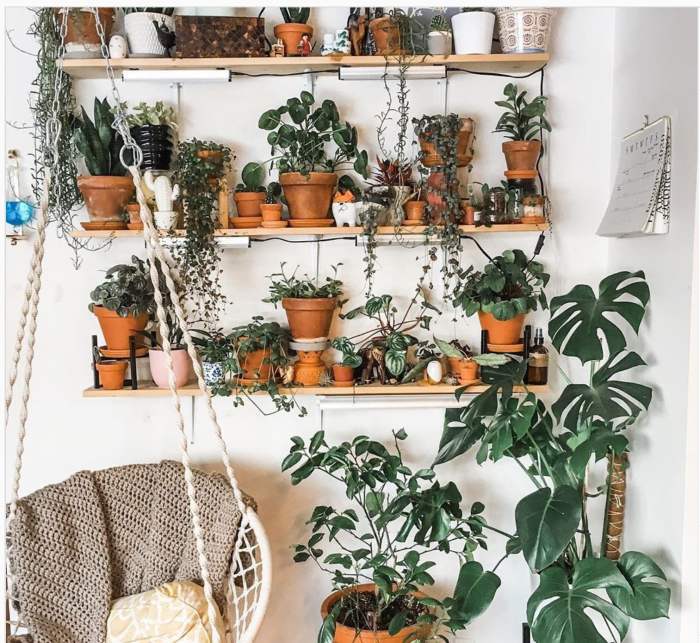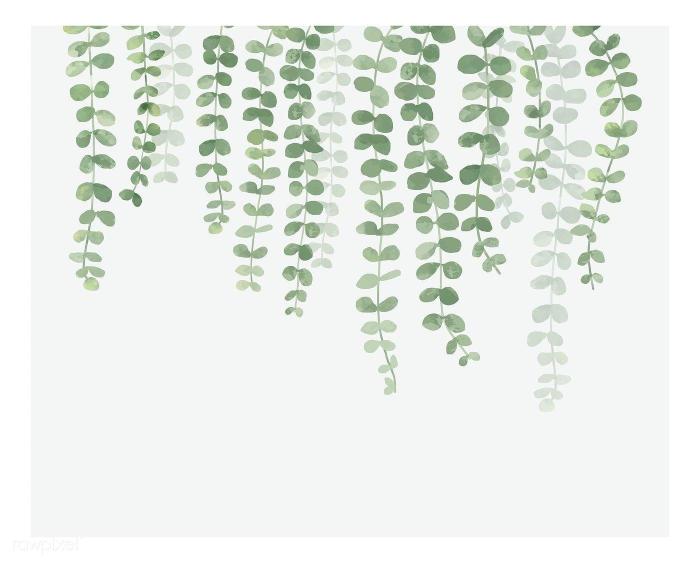Embracing the hanging plants aesthetic is a captivating way to infuse your interiors with a touch of nature and create a visually stunning ambiance. From bohemian to modern and minimalist styles, hanging plants effortlessly complement various design concepts, adding a layer of charm and tranquility to any space.
The incorporation of hanging plants in interior design transcends mere decoration; they offer a myriad of benefits, including improved air quality and a sense of well-being. With careful plant selection and proper care techniques, you can create a thriving indoor oasis that brings life and vitality to your living spaces.
Interior Design Aesthetics

Hanging plants have become an integral part of interior design, adding a touch of nature and personality to any space. Whether you prefer a bohemian, modern, or minimalist aesthetic, incorporating hanging plants can enhance the overall look and feel of your home.
Bohemian Style
Bohemian style embraces eclecticism and a love of nature. Hanging plants in this style are often lush and trailing, creating a sense of abundance and organic flow. Choose plants with long, cascading vines, such as pothos, philodendron, or spider plants.
Modern Style
Modern interiors are characterized by clean lines and simple forms. Hanging plants in this style should be sleek and structured, complementing the minimalist aesthetic. Consider geometric planters in neutral colors and opt for plants with architectural shapes, such as succulents, snake plants, or ZZ plants.
Minimalist Style
Minimalist style emphasizes simplicity and functionality. Hanging plants in this style should be understated and uncluttered. Choose plants with simple, clean lines and avoid excessive trailing or vines. Opt for plants like air plants, string of pearls, or small ferns.
Plant Selection and Care
Hanging plants add a touch of greenery and freshness to any space. When selecting plants for hanging baskets, consider the environment they will be placed in, as well as their specific care requirements.
For indoor hanging plants, choose varieties that thrive in low light conditions, such as spider plants, pothos, and peace lilies. Outdoor hanging plants, on the other hand, need more sunlight and can tolerate drier conditions. Some popular choices include petunias, geraniums, and trailing begonias.
Watering
Hanging plants require regular watering, but the frequency will vary depending on the plant type and the environment. Allow the soil to dry out slightly between waterings, and avoid overwatering, as this can lead to root rot.
Fertilizing
Fertilize hanging plants monthly during the growing season with a balanced liquid fertilizer. This will help to promote healthy growth and flowering.
Hanging plants add a touch of greenery and aesthetic appeal to any space. For those looking to attract hummingbirds, certain hanging plants can provide a welcoming environment. Discover which hanging plants hummingbirds find most appealing, such as fuchsia, lantana, and bee balm.
By incorporating these plants into your hanging planters, you can create a vibrant and inviting space that not only enhances the aesthetic but also attracts these beautiful creatures.
Pruning, Hanging plants aesthetic
Pruning hanging plants helps to keep them looking their best and encourages new growth. Remove any dead or damaged leaves, and trim back any long or unruly stems.
Creative Display Ideas
Hanging plants add a touch of greenery and life to any space. They can be displayed in a variety of creative ways to suit your personal style and the layout of your home.
One popular way to display hanging plants is to use macrame hangers. Macrame is a type of knotting that can be used to create beautiful and intricate designs. Macrame hangers can be hung from the ceiling or from a wall-mounted hook.
They come in a variety of lengths and styles, so you can find one that fits your space and your taste.
Shelves
Another option for displaying hanging plants is to use shelves. Shelves can be mounted on the wall or hung from the ceiling. They provide a great way to display multiple plants at different heights. You can also use shelves to create a vertical garden, which is a great way to add greenery to a small space.
Ceiling Hooks
Ceiling hooks are a simple and inexpensive way to hang plants. They can be screwed into the ceiling and then used to hang plants from chains or wires. Ceiling hooks are a good option for hanging plants in high-traffic areas, as they are less likely to be knocked over than plants that are hung from shelves or macrame hangers.
Incorporating Hanging Plants into Various Room Designs
Hanging plants can be incorporated into a variety of room designs. In living rooms, they can be used to add a touch of greenery and life to a seating area. In bedrooms, they can be used to create a relaxing and calming atmosphere.
In kitchens, they can be used to add a touch of freshness and color. No matter where you choose to hang them, plants can add a touch of beauty and style to your home.
Benefits and Considerations
Hanging plants offer an array of benefits for indoor spaces, including improved air quality, enhanced aesthetics, and reduced stress levels. However, it is essential to consider factors such as plant size, weight, and maintenance requirements before incorporating hanging plants into your decor.
Benefits
- Improved air quality:Studies have shown that hanging plants can remove harmful pollutants from the air, such as formaldehyde, benzene, and trichloroethylene, creating a healthier indoor environment.
- Enhanced aesthetics:Hanging plants add a touch of nature and greenery to interiors, creating a more inviting and visually appealing space.
- Reduced stress levels:The presence of plants in a room has been shown to reduce stress and improve mood, making hanging plants a valuable addition to any living or workspace.
Considerations
- Plant size and weight:Consider the size and weight of the hanging plant, as well as the strength of the hook or bracket you plan to use. Heavy plants may require more robust support to prevent accidents.
- Maintenance requirements:Different plants have varying watering, fertilizing, and sunlight needs. Choose plants that suit your lifestyle and maintenance preferences.
- Space availability:Ensure there is sufficient space for the hanging plant to grow and thrive without obstructing movement or interfering with other furnishings.
DIY Projects and Inspiration

Embark on a creative journey with these DIY projects and inspiration for hanging plant displays, transforming your home into a verdant sanctuary.
Hanging plants have become a popular way to add a touch of nature and style to indoor spaces. With their lush foliage and cascading vines, hanging plants can create a sense of tranquility and bring the outdoors in. While many hanging plants thrive in bright, indirect light, there are also a number of varieties that prefer shady conditions.
For those looking to add some greenery to their low-light areas, consider hanging plants that like shade indoor. These plants can tolerate low light levels and still thrive, adding a touch of elegance and beauty to any room.
Macrame Plant Hangers
Create intricate macrame plant hangers with this step-by-step guide:
- Gather macrame cord, scissors, and a measuring tape.
- Cut cords to desired lengths and attach them to a ring or hook.
- Divide cords into groups and knot them using square knots and other macrame techniques.
- Customize with beads or tassels for a unique touch.
Repurposed Plant Displays
Repurpose everyday items into charming hanging plant displays:
Tin cans
Hanging plants have become increasingly popular for their aesthetic appeal, adding a touch of greenery and freshness to any space. For those with limited space or shallow pots, choosing plants with shallow roots is essential. Hanging plants with shallow roots thrive in hanging baskets and shallow containers, making them ideal for apartments, balconies, and small spaces.
They come in various shapes, sizes, and colors, complementing any hanging plants aesthetic.
Pierce drainage holes and suspend them with twine.
Wooden crates
Attach metal hooks and hang plants from the sides.
Old baskets
Line with moss or fabric and hang them with macrame or rope.
Inspiration Gallery
Find inspiration from these stunning hanging plant installations:
Vertical garden wall
A lush wall of greenery created by hanging plants on a grid.
Macrame chandelier
A cluster of macrame plant hangers suspended from the ceiling.
Living ceiling
A ceiling covered with hanging plants, creating a verdant canopy.
Summary: Hanging Plants Aesthetic
Whether you’re seeking inspiration for creative display ideas or practical advice on plant care, this comprehensive guide delves into the world of hanging plants aesthetic, empowering you to transform your home into a verdant haven. Embrace the beauty of nature and create a living masterpiece that will enhance your daily life and elevate your interiors to new heights.
General Inquiries
How do I choose the right hanging plants for my space?
Consider the light conditions, humidity, and size of your space. For low-light areas, choose plants like pothos or snake plants. For brighter spaces, opt for succulents or ferns.
What are some creative ways to display hanging plants?
Use macrame hangers, shelves, ceiling hooks, or even repurposed everyday items like baskets or jars to create unique and eye-catching displays.
How often should I water my hanging plants?
Watering frequency depends on the type of plant and the environment. Check the soil regularly and water when it feels slightly dry to the touch.